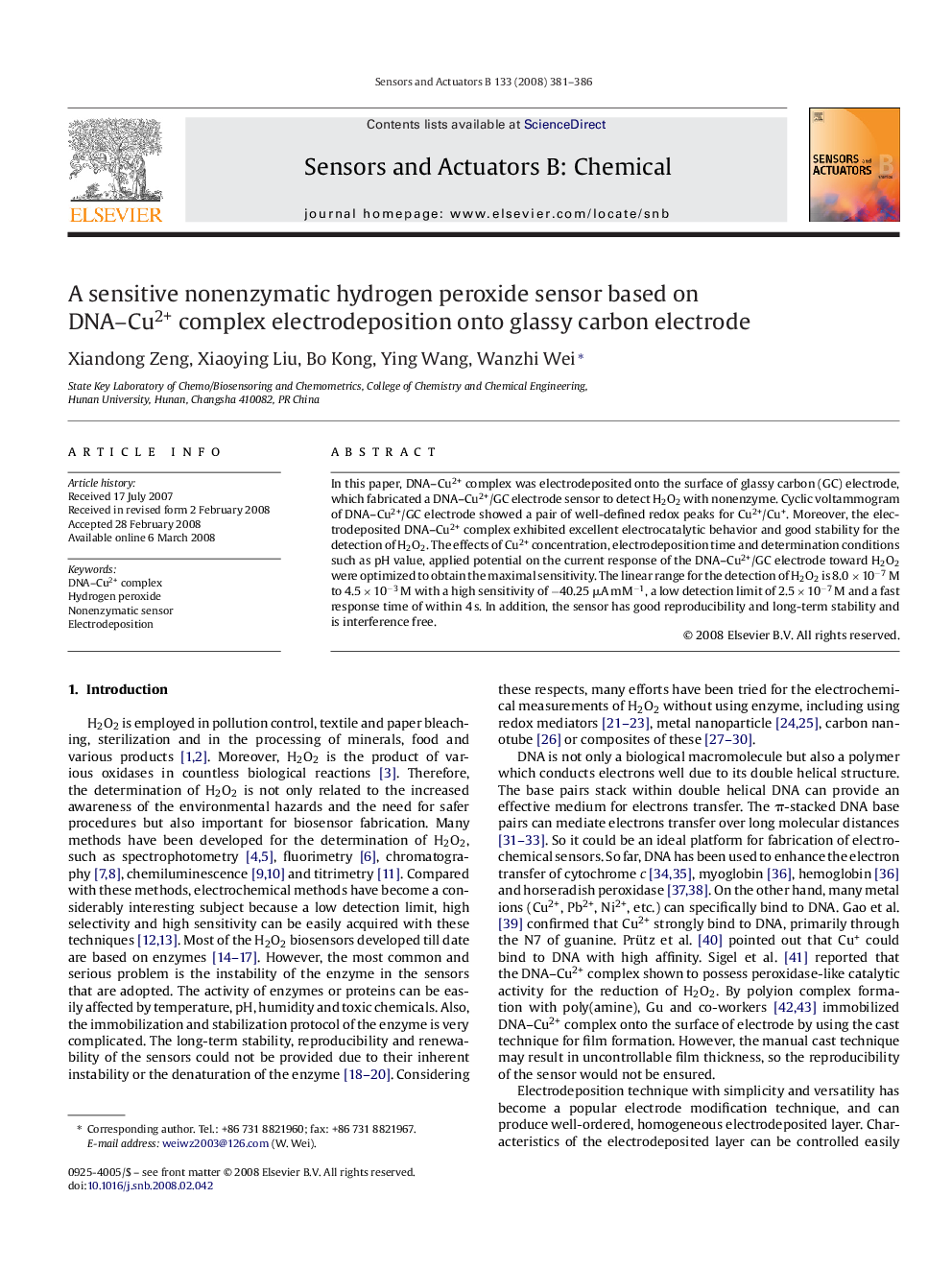| Article ID | Journal | Published Year | Pages | File Type |
|---|---|---|---|---|
| 743631 | Sensors and Actuators B: Chemical | 2008 | 6 Pages |
In this paper, DNA–Cu2+ complex was electrodeposited onto the surface of glassy carbon (GC) electrode, which fabricated a DNA–Cu2+/GC electrode sensor to detect H2O2 with nonenzyme. Cyclic voltammogram of DNA–Cu2+/GC electrode showed a pair of well-defined redox peaks for Cu2+/Cu+. Moreover, the electrodeposited DNA–Cu2+ complex exhibited excellent electrocatalytic behavior and good stability for the detection of H2O2. The effects of Cu2+ concentration, electrodeposition time and determination conditions such as pH value, applied potential on the current response of the DNA–Cu2+/GC electrode toward H2O2 were optimized to obtain the maximal sensitivity. The linear range for the detection of H2O2 is 8.0 × 10−7 M to 4.5 × 10−3 M with a high sensitivity of −40.25 μA mM−1, a low detection limit of 2.5 × 10−7 M and a fast response time of within 4 s. In addition, the sensor has good reproducibility and long-term stability and is interference free.
